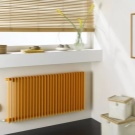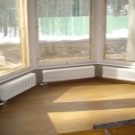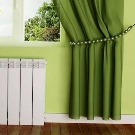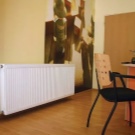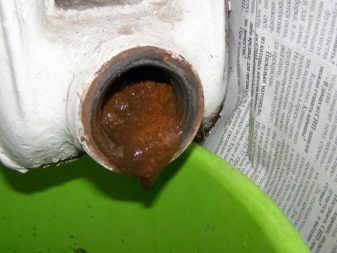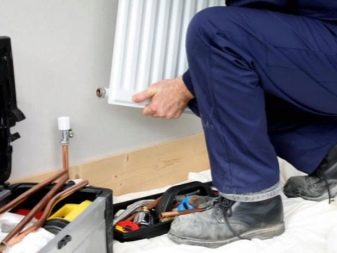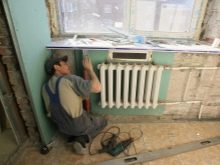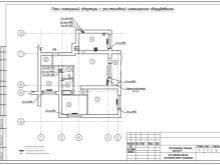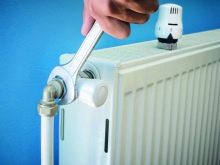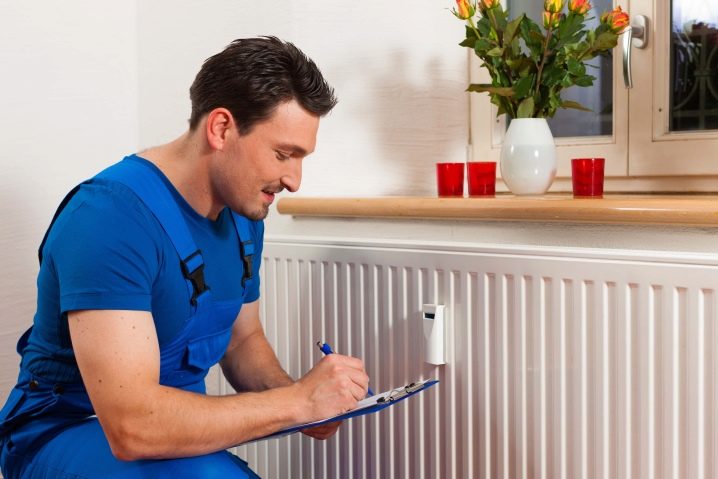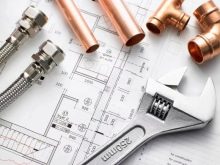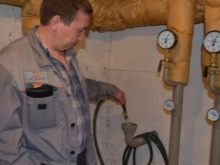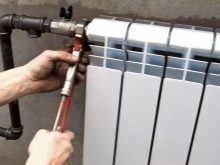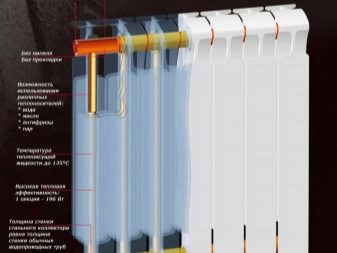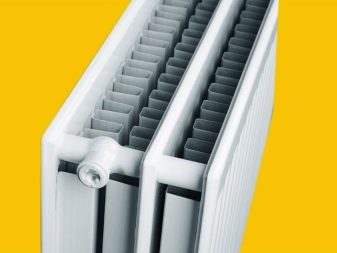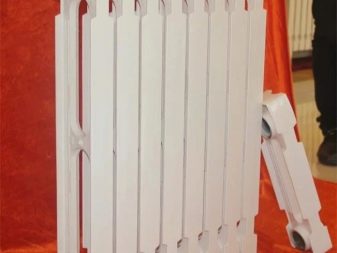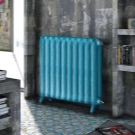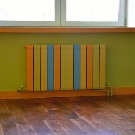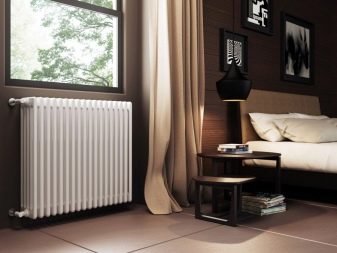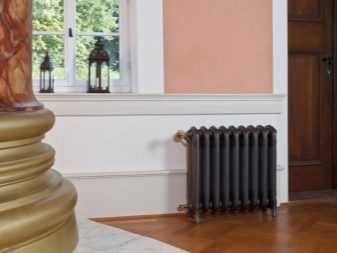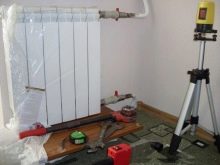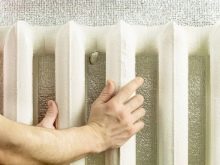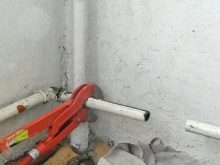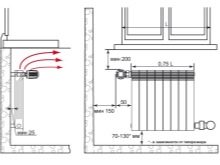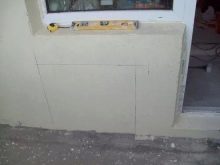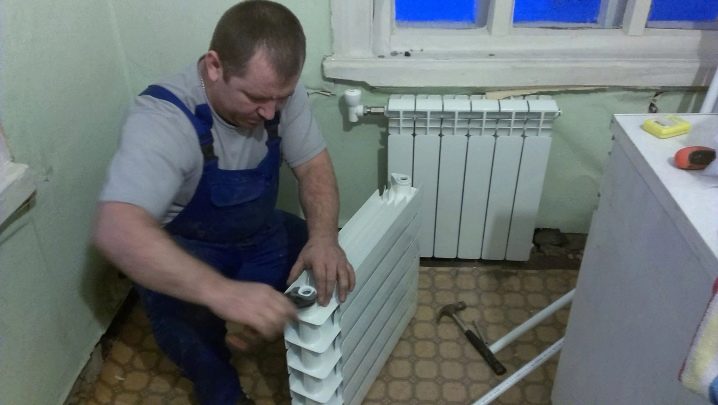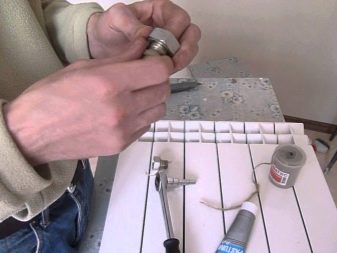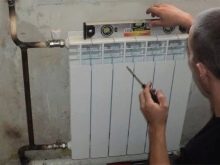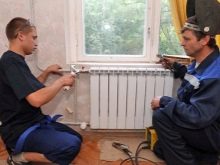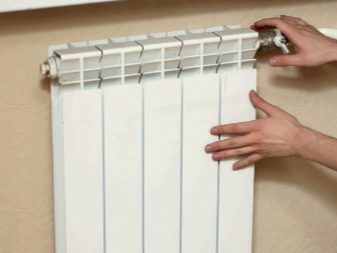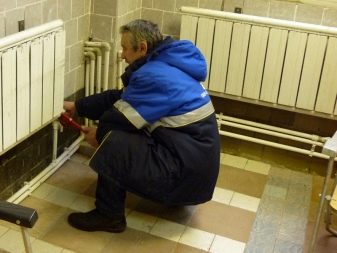Replacing heating radiators: the right approach and sequence of actions

In many countries, the concept of heating apartments is absent altogether, but our climate does not allow such luxury at all. For this reason, radiators are present in any apartment in a high-rise building, replacing older stove structures. At the same time, the installation of batteries was most often carried out at the construction stage of such high-rise buildings, which usually last for several decades, because the issue of replacing radiators periodically arises in each apartment. This procedure is far from the simplest, because it is worth understanding it in more detail.
Reasons for need
Due to the fact that many Soviet high-rise buildings did not initially anticipate too long a service life, engineers usually did not consider the possibility of simply shutting off the water supply in the pipes to replace the battery. Because of this, even during a major overhaul, batteries do not always change - they are often changed by necessity, and not by whim.
There are several reasons for replacing the batteries in an apartment:
- Nothing lasts forever, and metal pipes that are in close contact with hot water for several months every year are even more so. As already mentioned, some of them have been exploited for decades, because in some cases their wear is not surprising. During operation or when the heating is started in the autumn, such a battery can leak, after which its further use becomes impossible.
- Over time, the heating efficiency of the radiator decreases. This is due to the fact that inside the pipe over the years, deposits accumulate, which thicken the walls of the battery, because of which the heat simply does not reach the room. Moreover, in the course of the repair, the owners often paint old radiators, which only aggravates the situation.Since it is impossible to clean the pipe from the inside, it is necessary to change it entirely.
- Often, the owners are simply dissatisfied with the size of the battery installed in a large room. In their opinion, more sections could be used to accommodate an appropriate size, which in many cases turns out to be true. Again, here is only one solution: dismantle the old battery and install a new one, longer.
- In the end, the old radiator can simply spoil the design of the room. Agree, in modern repair, where plastic and other modern materials prevail, old cast-iron pipes, often oblezshshie, look like a completely foreign body. Is it a matter of modern analogs, which in themselves can become an excellent decoration for the interior.
Who carries out the installation?
Theoretically, the management company, that is, the housing office, should finance and carry out radiator replacement works. Since 2006, the Decree of the Government of the Russian Federation No. 491 has been in effect, according to which absolutely the entire heating system of an apartment building is in common ownership, even if individual batteries are located in a privatized apartment.If the battery has become unusable by any of the methods described above, the housing office is obliged to change it without charging the tenant or the owner of the living space an additional fee, since such a replacement is paid for by the monthly paid rent.
In practice, of course, everything looks completely different. In a state-owned apartment, it is somewhat easier to get a free-of-charge replacement, but in privatized housing you will have to face illegal extortion when the management company requires you to buy a radiator for your own money, or even pay for the work done. Moreover, the employees of the housing department will be very difficult to convince that the radiator is really worn out - they will agree with the arguments of the owners, unless the accident rate of the radiator is not just obvious, but arouses fears. Such a cool attitude is especially noticeable when trying to achieve free repair.
Often, the management company also delays the replacement of the radiator as long as possible, preferring to do the minimum repair of existing equipment.Even a noticeable excess of the planned operating period (maximum - 40 years) is not a sufficient argument for the housing department, if they consider it possible to limit cosmetic repairs. If everything is in relative order with the battery, and the main motivation of the owner is to update the apartment's appearance, then you can forget about the free replacement - if the housing office becomes involved in this, then it is only for your money.
In any case, the procedure is not so simple. If it is a question of a free replacement through the housing office, you must submit to the institution two copies of the corresponding application, each of which must contain the number and date of the document, as well as the signature of the office employee who accepted the application. In reality, such a document is needed in one copy, the second is done just in case - to make it easier to assert their rights to free repair.
In this case, it is necessary to coordinate the replacement also in accordance with the parameters of the heating system in the house. The fact is that the system of each house is designed specifically for the use of batteries of such size as they were at the time of construction,therefore, the installation of any other radiator (larger, with increased heat transfer, from another material or simply in an unspecified place) can lead to a serious accident of the entire system. If the repair is organized by the housing office, then they must resolve this issue on their own, but if the owner does it all himself, he will need a special permit, if only one radiator does not change to another, completely similar.
You can get permission only after a package of documents is submitted to the regulatory organization, which includes, in fact, a statement on the replacement and registration certificate of the living space, a document confirming the ownership of the premises, as well as certificates confirming the conformity of absolutely all the components to be replaced, including even fittings requirements of the existing system. In some cases, a document is also required confirming the positive conclusions of the examination on the possibility of upgrading the system. Examination of the thermal calculation is required in situations where the new radiator differs significantly from the old one or will be installed in another place, as well as in the case if new links are to be added to the old battery. This service, of course, is not free.
You should not think that obtaining permission is a quick procedure. From the moment all the documents are received by the managing organization, it may take two months to get permission.
When permission is finally obtained, you must also submit an application so that the riser is turned off and the coolant is drained from it, otherwise you can globally flood your own apartment during the repair process. But even this paperwork does not end, because after the completion of all the work will have to carry out another examination - technical. At this time, the management company must check whether the work performed corresponds to the ones for which you received permission, and whether the replacement of the radiator did not harm the entire heating system.
Optimal time
It is obvious that it is better to change the heating radiators in the warm season, when the heating in the house is not turned on - in this situation the heat carrier is most likely not in the system anyway, therefore it is not necessary to turn off the riser, depriving people of heating. The underwater stone here is the fact that even in the interval between two heating seasons, the management company can carry out hydraulic tests of the system when the heating is briefly started in test mode.Before carrying out the work, it is imperative to clarify when such tests are planned, and be sure to postpone the procedure to the day when there are none.
In life, everything happens and is much more difficult - for example, if a battery leaks during the heating season, it should be changed immediately, without waiting for the summer. It should be noted that the current rules suggest a paid replacement of emergency radiators in the privatized apartment, if it is urgently required - it is assumed that the owner had to monitor the equipment and apply for replacement before the situation became catastrophic. For this reason, you need to take care to replace the old radiator in advance - as soon as it began to cause concern.
Select a new battery
It is assumed that the new radiator must necessarily be better than the old one, especially if it was changed not because of wear, but because of the desire for improvement. For this reason, the choice of a radiator should be carried out even at the earliest planning stages, because without knowledge of a particular model, it will not even be possible to submit all the necessary documents.
First you need to understand what types of batteries are heating:
- Sectional radiators - these are the very ribbed constructions, which in the understanding of people are considered classical. Inside, they are empty — coolant circulates through these sections. A peculiar "trick" of such a decision is the ability to increase the number of sections without replacing the radiator itself, which will improve the heating situation in the room. There are only two limitations to this modernization: the brackets must withstand the heavier construction, and the heating system must increase the load. Such batteries are made from completely different materials - there are cast iron, aluminum, steel and bimetallic (two different metals) radiators. Each of the materials will have its own advantages and disadvantages, as discussed in more detail below.
- Columnar batteries they resemble sectional ones, but it is problematic to increase them due to the design features. The water here passes through two horizontal reservoirs, which are interconnected by a certain number of vertical columns. Such radiators are aluminum and steel.
- Panel radiators they are distinguished by an absolutely atypical view - they do not heat pipe through pipes, but into flat panels, due to which the heat transfer occurs much faster.This type of construction is produced exclusively from rolled steel.
When deciding on the choice of a specific radiator, one should pay attention to its practical characteristics, which largely depend not only on the type of construction, but also on the material from which it is made:
- Strength of materials - this is the main criterion on which the durability of the performed repair depends. The radiator must withstand the pressure of the coolant with a significant margin. The instruction indicates the working pressure - one that does not harm the product, and the test pressure is the limiting one, from which the battery does not burst immediately, but wears out extremely quickly. It is on the working pressure prescribed in the instructions, and should pay attention. It should be noted that on the 9th floor water is supplied at a pressure of 6 atmospheres, however, as many as 15 atmospheres are required for the 22nd floor, so the batteries for different floors of one house need different ones. Because of this, very “warm” aluminum radiators are suitable only for the private sector, and they are practically not used in high-rise buildings. Cast iron products are relatively inexpensive and therefore popular, but their limit is 9 atmospheres, so they are also out of place above the ninth floor.It turns out that only the best steel and bimetallic structures are suitable for the highest floors.
- Anti-corrosion properties - also an important feature. Water, as it is known, even grind stone, and metal even more. The strength of the product does not matter if due to the interaction with water it quickly rusts and loses its original qualities. In this context, aluminum again turns out to be the most useless, and if the choice nevertheless fell on him, when pouring water into the radiator, special anti-corrosion additives must be mixed there to protect the material. As for cast iron, there is no better material in this sense.
- Battery indoors installed in order to keep it warm, it is unacceptable to ignore such a moment as the thermal conductivity of the material from which the radiator is made. Here it should be borne in mind that not only the material, but also the thickness of the walls has an impact on the final indicator, because the exact thermal conductivity is usually specifically indicated in the accompanying documents. When calculating, it should be assumed that for every square meter of space you need 80 watts of power, if the ceilings are low, and the walls are insulated, and as much as 120 watts, if the description of the room looks completely the opposite.This indicator is the main factor due to which aluminum radiators are popular because they give off heat better than any other materials.
Preparation for work
The first thing to do before starting repairs is to disconnect the riser. It is much better if the replacement is done before the radiator reaches a catastrophic state - then you can make a replacement in the summer, without shutting down the riser. Properly selected date, which is not included in the heating season and for which no tests are scheduled, will help to avoid unforeseen flooding. Nevertheless, the thoughtful owner will prepare in advance special dishes in order to collect water into it, which could remain in the heating pipes even from the heating season.
Ideally, it is better to agree in advance with the neighbors above and below.so that new pipes dock with the old system not in your apartment, but in the neighboring ones - when docked with the old radiators of the neighbors. Because of this, the cost of the details will increase a little and the dates will have to be coordinated with the neighbors, but the procedure will be much simpler and more comfortable, and they will not invade your apartment with the new repair.For neighbors, there is also a benefit in this, because at least a part of their heating system will be updated. If it is not possible to agree, it will be necessary to cut the metal pipes right in the middle in my apartment, because of which the repair will be somewhat incomplete.
If the neighbors meet, you need to carry out large-scale measurements of the entire front of work. It is necessary to calculate the diameters of the output pipes of both neighbors and at home, as well as measure the potential length of the pipe, taking into account interfloor overlaps. After that, you can go to buy all the components. You should not think that everything will be limited to one radiator - it is also necessary to purchase special pipes and taps for them, allowing to block heating only at home, as well as various plugs and gaskets that ensure uninterrupted operation of the system even when your battery is removed.
If the work is done personally, it is worth stocking up with tools - a complete set that includes a soldering iron and various keys, a drill and a grinder, a level, a pencil and a tape measure. If the neighbors refused to interact, you will also need a special tool for threading.
Dismantling and marking
When everything is ready for replacement, you can dismantle the old radiators. As a rule, they are attached to the pipe by means of a roll - a characteristic threaded joint, which is quite easy to unscrew. If it is present, it is logical to start with its unwinding. Most likely, the pipe will still have to be partially cut off, especially if the new battery is larger than the old one, but then, if possible, it is advisable to leave at least one centimeter of the old thread, and if it does not work out, you will have to boil or cut a new one. It is worth noting that when trying to cut threads on top of it, the old pipe may burst, therefore in this case it is better to work as welding. If the new battery is suddenly smaller than the old one, the pipes are expanded in any way possible.
Separately, it must be said that the cut edge of the pipe must be perfectly flat.otherwise you shouldn’t even hope to hang a new radiator in the house exactly. The level in the dismantling process is needed precisely for this - so that the master can clearly define and preliminarily mark the line of the future slice with a pencil. If it still happened crookedly, the edge can be trimmed with a grinder. After that, the battery can be removed from the brackets on which it holds.As a rule, the old brackets are also replaced with the old radiator.
After that, you should carefully mark the site, because it is impossible to properly hang the radiator, if you can not say in advance exactly where it should be. Here everything is also done at random - there are certain requirements that it is desirable to fulfill. For example, the distance from the floor to the battery should be about 10-15 centimeters, otherwise there will be problems with wet cleaning, and the ventilation will not work. Significantly higher battery should not be lifted simply because otherwise it will interfere with the window sill, to which, by the way, must also be at least 15 centimeters - for similar reasons. Finally, the battery should not be pressed to the wall - at a distance of 3-4 centimeters such an obstacle does not interfere with the release of heat and its further reflection back into the room. All these moments are regulated by the arrangement of the new brackets and the depth of their screwing in - that is why the old fasteners are not used even if they still look quite well preserved.
Installation steps
It does not matter whether you install the new radiator or resorted toservices of the hired worker - in any case, it is worth understanding what the procedure for installing a new battery looks like to know how soon the procedure will end. You can do all the work yourself, if you clearly understand the sequence of actions.
As already mentioned, you must first ensure that the riser is turned off. If you suddenly need a replacement in the heating season, you can argue the urgent need for either an emergency situation or a too low temperature in the apartment where the children live. When the riser is turned off, and the entire coolant is released from the system due to the open drain valve in the basement, you can proceed to the installation process. In this case, when it is necessary to replace all the radiators in the apartment, in turn it is necessary to turn off each riser, which the housing office should be warned about.
First you need to prepare all the components. The radiator is supplied in a “bare” form, therefore it is necessary to immediately equip it with integral parts such as cage nuts. If it is planned not so much to replace the radiator as to replace the section or increase their number, you need to perform all the necessary manipulations with the radiator.At this moment a new thread is cut on the trimmed pipes, or if the material seems to be too old and worn out, a new fragment with an already finished thread can be welded to the old one on gas welding.
A sealing material is applied to the threads of the taps, which can take on a most unexpected form. The most suitable and versatile solution is considered to be a linen strand impregnated with silicone sealant or even simply well dyed with any paint, except water-based paint. To begin with, they paint the thread, then in a certain way (clockwise, as tight as possible and in the form of a cone) the tow is wound on it and once again they paint over everything, sparing no paint. After that, the taps are screwed onto the pipe threads almost to the stop, and the protruding “extra” tow is again thoroughly soaked with paint to prevent leaks.
The next step is fitting the radiator to the erected structures. To do this, you need to find a stand of adequate height that would be able to withstand the weight of the battery, and set the design in such a position in which it should be in mounted form.At the same time, the general positive impressions of the visible position should not provide confidence in the correct position of the battery - it is necessary to check whether it normally connects in this position to the taps mounted on the pipes. If yes - you need to formally fix it, connecting with cranes, and proceed to the markings of fasteners.
The radiator is usually held using four brackets., screwed into the wall, however, for the correct and stable position of the battery, it is very important that they represent a clearly horizontal line. For this reason, the initial marking of potential points for drilling is first performed, then their horizontal position is determined by the level, and, if necessary, adjustments are made. If the level shows a flat horizon, it is possible to drill holes in the wall for the brackets and fix them, and at this stage it will not be too much to use the level to check the result. If the line turned out to be horizontal, the brackets install a new radiator, and all transitions from pipes to the battery are fixed with nuts of a detachable connection. After this, it is worthwhile to once again make sure that all the fixings are tight and to improve them with the help of sealants and welding.
System test
Ideally, the examination of the results of the completed work is carried out in the presence of representatives of the housing department, however, if the work was done independently, such a procedure can be performed without them, in order to immediately correct possible shortcomings. To do this, first, the flow of coolant to the riser is resumed; meanwhile, air is gradually being released from the newly installed radiator. For these needs, a pre-installed part is used, which is known as the Mayevsky tap - when water flows from its hole instead of air, this will mean that the coolant has already reached the apartment. At this point, Mayevsky's faucet closes, instead, a faucet is opened, letting water into the radiator.
After that, wait a few minutes to ensure that the new battery is filled with water. If the central heating system in the apartment does not leak anywhere and there are no strange phenomena, then the replacement was successful. In case the procedure was performed outside the heating season, it is recommended to close the taps after the examination so that the radiator does not keep the water destroying the material all this time.At the time of the start of heating in the autumn, the taps need to be opened again by letting hot water into the battery, otherwise the coolant will not fall into the radiator or break the pipe.
Further you watch a master class on replacement of a radiator of heating.

